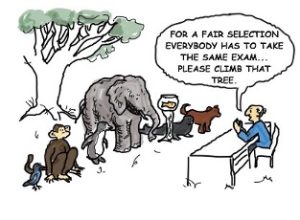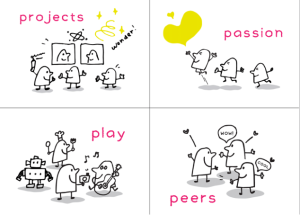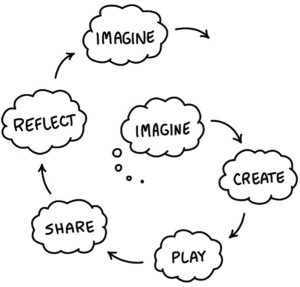

Imagine being in a classroom teaching a lesson about recycling. One student/child already knows about the concept, and is bored and keeps talking/singing etc. Another student/child is lost in the new information and can’t keep up. A third one is a visual learner who needs more than a lecture to understand the process. How do you teach this one topic to help all students/ children? Differentiated learning is the answer, and in this module, we’ll explore the practical strategies to make it a reality.
In this lesson you will learn
In this section, you will explore the key concepts of differentiated learning using a combination of short texts and videos. These materials are designed to help you understand what differentiated learning is, what are the prerequisites of differentiated learning, what does it include and how it influences learning and classroom climate.
To support your understanding of differentiated learning, this lesson includes a reflection writing of your own practice.
Differentiated learning is the practice of adapting curriculum and teaching methods to meet the diverse needs of every student/child. It is a proactive approach, not a reactive one, that requires educators to get to know their students/children as individuals. Instead of expecting all learners to tackle the same task in the same way, differentiation recognizes and responds to differences in:
Why is it important? At its core, differentiated instruction moves away from the “one-size-fits-all” model of education—where every student/child is given the same test, assignment, educational activity —and instead provides a variety of paths to success. The goal is to ensure that every student/child is challenged and engaged, whether they need more support, a different type of activity, or a more complex task.
“Climbing the tree”: The picture below shows the problem (an unfair, standardized approach) that the principles of differentiation are designed to solve.

Based on the picture above, write a post in the discussion forum explaining your opinion on how it relates to the concept and principles of differentiated learning.
There are certain core beliefs and actions that allow an educator to move from the “one-size-fits-all” model to a more equitable one.
Acknowledge Student Diversity: The fundamental principle is that all children are different and have unique learning needs. Effective differentiation begins with this core belief, moving away from a one-size-fits-all approach.
Differentiate Goals and Expectations: Educators must adapt their learning goals and expectations for each child. This means setting high, yet attainable, goals that are tailored to an individual student’s readiness and learning profile, rather than applying the same standard to all by promoting equal educational opportunities.
Continuous Documentation of Student Progress: Differentiated instruction relies on ongoing observation and assessment. By continuously documenting students’ actions and understanding, educators can make informed, responsive decisions about how to support their learning in real time.
Proper Organization of the Learning Environment: This prerequisite involves thoughtfully arranging the physical or virtual learning space, as well as the tools and materials used. The environment should be organized to facilitate various types of activities and to easily meet the diverse needs of learners.
Promote Creativity: The learning process should encourage and value student creativity. Differentiation is not just about meeting basic needs; it’s about providing opportunities for students to think flexibly, solve problems in unique ways, and express their understanding creatively.
Given that our core principles for education are based on the ideas of Mitchel Resnick (2017) and Janet Moyles (1989), as represented by the 4 P’s of Creative Learning and the Play Spiral model, it’s clear that these frameworks are essential for fostering differentiated instruction. What do you think?
 Resnick, 2017
Resnick, 2017

Moyles, 1989
The five principles of differentiated learning answer the question “why” behind the “how” of differentiated learning. In the next lesson will provide the specific tools and strategies for applying these principles in a classroom setting.
Watch this video that explains the principles of differentiation and you could also share it with your students/children https://www.youtube.com/watch?v=h7-D3gi2lL8